#1503/1504
Text

Nick has a memory from past coming on...


Flashback: Hertogenbosch, Holland (Brabant) 1503-1504
Nicholas comes across Ilsa's lifeless body and Master Bosch tipping a silver wine goblet over with his cane. Bosch says, They call it, "Lady Killer." It's the most popular with the ladies because it's the cheapest. Nicholas embraces a dead Ilsa's hand.

Nick returns from his memory of the past and tells Natalie, Not luck, Nat. Courage.
#Forever Knight#112 Dead Issue#Flashback#Memories#Hertogenbosch#Holland#1503/1504#Brabant#Master Painter Bosch#Ilsa#Nicholas De Brabant#Nick Knight#Geraint Wyn Davies#Vampires#Blood#Toronto#Canada#Hieronymous Bosch#Nicholas Knight#Attack#Violation#Guilt#Sadness#Tears#Natalie Lambert#Catherine Disher#Picnic
4 notes
·
View notes
Note
so where would anne, george and mary fall in the "five kids in five years" time line if he's the eldest?
hm, well, we don't know what years henry and thomas boleyn died, since the 'c.1520' seems like it was the date their brasses were made, not, obviously, the date of their deaths (both tiny tombs suggest cot deaths). "the exact date of elizabeth's marriage to thomas boleyn is unknown but her jointure was settled on her in 1501 suggesting a recent marriage some time after 1498 [...]"
so, i would think george was maybe born 1499, 1500, or 1501, mary born 1500, 1501, or 1502, and my personal theory is that anne was born either 1503 or 1504 (possibly 1505...)
*also going back to this quote ('general line rather than heirs male'), why would hunsdon have only said 'eldest daughter/sister', not 'eldest child'? the latter would arguably have given him a stronger claim, i'd assume because he knew the first was true but not the second:
"Lord Hunsdon's rather complicated account of the Boleyn titles shows that he had a good grasp of family history. Although his daughter, in her tomb memorial, stated that Mary Boleyn was the second daughter, it seems more likely that Lord Hunsdon was correct. Where the queen was his co-heir to the Boleyn title, he would have wanted to be very sure of his facts."
Anne Boleyn: Henry VIII's Obsession, Elizabeth Norton
#anon#'as long as my father lived she brought me every year a child'#seems to suggest either a slight exaggeration or beyond those four there might have been some cot deaths we don't know about?#and/or he still considered any of his wife's stillbirths as 'children'#bcus taken literally and estimating the marriage at 1500 at the latest#would mean 1501 1502 1503 1504... + 1505#(william boleyn died in october 1505)#so you'd have to suppose they married actually 1501. to take that literally and believe there were four boleyns of this generation#or rather that elizabeth had four pregnancies#and no others.#(counting 1502 as like the 'first' year of their marriage if they say. married mid to late 1501)#(although i admit my little pop psychology theory could be easily torpedoed by the standards of the time#by default the male child basically was legally and socially considered 'the eldest'#inheritance wise and whatnot)
2 notes
·
View notes
Text




From Season 1, Episode 112 Dead Issue - Flashback: Nicholas and Ilsa pose, for Master Painter Bosch. #ForeverKnight #GeraintWynDavies #NatalieRadford
Just having fun with these screenshots. Sony has all the rights to this screenshot set. 😉
#Forever Knight#112 Dead Issue#Flashback#Hertogenbosch#Holland#1503-1504#Sexy Vampire#Ilsa#Painter's models#Nicholas De Brabant#Geraint Wyn Davies#Hieronymous Bosch#The Garden of Earthly Delights#Blood#Vampires#Memories#Nick Knight#Nicholas Knight#Enhanced Photo#Photo Stills#90s vampire cop show#Drama#Horror
2 notes
·
View notes
Text

𝑭𝒆𝒔𝒕𝒊𝒗𝒂𝒍 𝒐𝒇 𝒕𝒉𝒆 𝑳𝒐𝒔𝒕
⋅•⋅⊰∙∘☽༓☾∘∙⊱⋅•⋅
ℙ𝕦𝕞𝕡𝕜𝕚𝕟 𝕊𝕥𝕖𝕟𝕔𝕚𝕝
Pumpkin Stencil - [ Link ]
ℙ𝕒𝕡𝕖𝕣𝕔𝕣𝕒𝕗𝕥 𝕄𝕒𝕤𝕜𝕤
The Speaker MSK-1501 - [ Link ]
Eris Morn MSK-1502 - [ Link ]
Oryx MSK-1503 - [ Link ]
The Traveler MSK-1505 - [ Link ]
Cryptarch MSK-1506 - [ Link ]
Tiger MSK-1507 - [ Link ]
Crota MSK-1511 - [ Link ]
Atheon MSK-1512 - [ Link ]
Festival of the Lost 2016 MSK-1601, 1602 & 1603 - [ Link ]
Chicken MSK-1804 - [ Link ]
Eris Morn MSK-1901 & 1901b - [ Link ]
Lord Shaxx - [ Link ]
Ghost - [ Link ]
𝔼𝕟𝕘𝕣𝕒𝕞 𝕄𝕒𝕤𝕜
Uncommon Engram MSK-1504 - [ Link ]
Rare Engram MSK-1508 - [ Link ]
Legendary Engram MSK-1509 - [ Link ]
Exotic Engram MSK-1509 - [ Link ]
𝔻𝕖𝕤𝕜 𝕋𝕠𝕪
Siva Nodes DSK-1601, 1602 & 1603 - [ Link ]
⋅•⋅⊰∙∘☽༓☾∘∙⊱⋅•⋅
I think there are at least two Mask that I cannot find links for but this seems to be everything else.
Along with those I would like to add my own Papercrafts, Engrams! I made these years ago for the Festival.
Papercraft Engrams
Uncommon Engram [ Link ]
Rare Engram [ Link ]
Legendary Engram [ Link ]
Exotic Engram [ Link ]
Download and Have Fun
111 notes
·
View notes
Text

Andrea Solario - Ecco Homo. Detail. 1503 - 1504
102 notes
·
View notes
Text

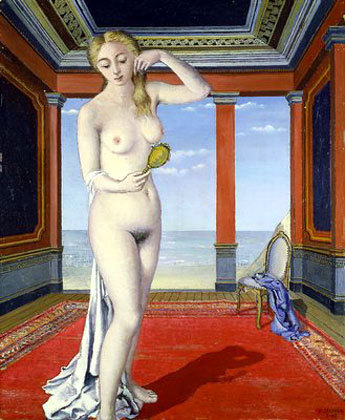
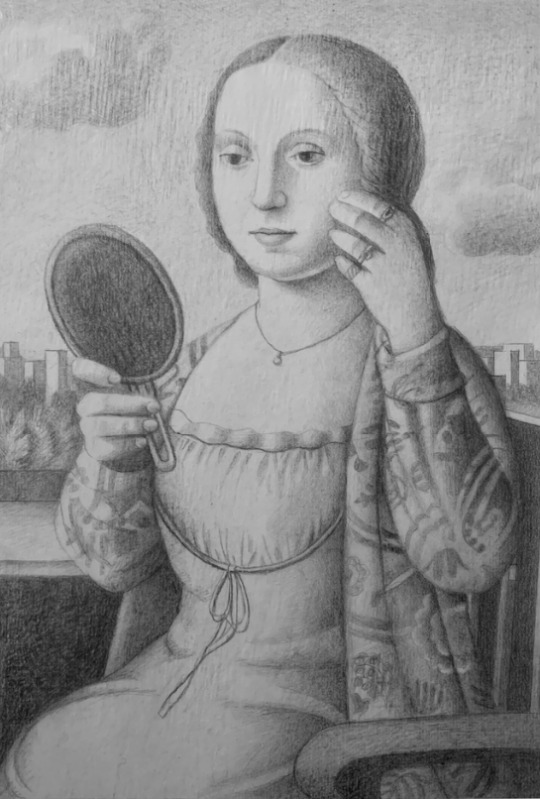



Woman With Mirror
Jacopo de' Barbari, 1503-1504
Paul Delvaux, 1945
Amy Hill, 2012
Pablo Picasso, 1948
Tanya Merrill, 2020
Alberto Ziveri, 1961
23 notes
·
View notes
Text
Some of you people are acting like it's still 1502 and it shows
In 1502, after spending eight months exploring the coasts of Honduras, Nicaragua, Costa Rica, and Panama, Columbus beached in Jamaica at the end of June 1503. There, he and his men were stranded for one year. Since the governor of Hispaniola was not a fan of Columbus, he stopped any efforts to rescue him.
At first, the natives were hospitable to Columbus, but his sailors stole from and cheated the natives. Finally, after six months the natives stopped their food supply to Columbus and his men.
Columbus had one last trick up his sleeve. Columbus had an astronomy almanac by Abraham Zacuto. He noticed there was a lunar eclipse coming up on February 29, 1504. He met with the tribal leader and told him God was angry with native’s treatment of Columbus. He said his God would put clear sign of his anger in the sky by making the full Moon appear “inflamed with wrath.”
His trick worked.
When the natives saw the eclipse—on schedule, just as Columbus predicted—they ran from all directions to Columbus’ ships with fresh provisions, begging him to pray to his God for protection. Columbus went to the cabin of his ship to “pray,” timing the eclipse with his hourglass. Totality—the period of time when the moon is completely engulfed in Earth’s shadow—was about to end, so Columbus emerged from his cabin and told them God had forgiven them. Just then the moon started to reappear and the natives were grateful.
They continued to care for his men for several more months until he was rescued.
18 notes
·
View notes
Text
Thread about Joanna of Castile: Part 8.2: “A Mother's Distress: Juana's Turbulent Departure from the Castle”
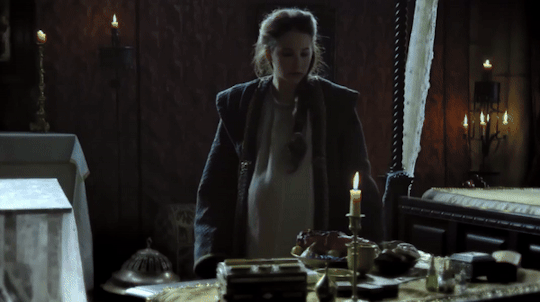



Guessing that her mother was trying every trick she could think of to
keep her, Juana abandoned pleading and talking. Instead, she staged an astonishing display of histrionic, even hysterical, behaviour, indulging in tactics she would employ for the rest of her life whenever she was thwarted or powerless. She refused to eat, to talk, or to sleep, she attempted to force a ship’s captain to prepare to sail.
On a cold November night, Juana fled, half-clad, from the castle.
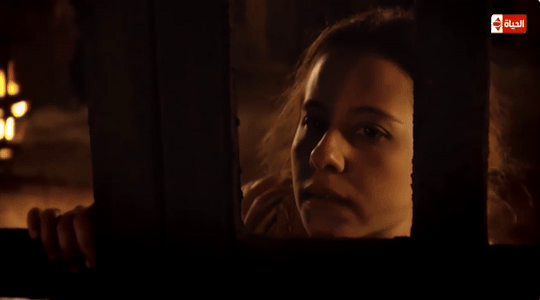





When she realised that Isabel had ordered that the gates be shut, she
“Remained in the outer precinct of the house all evening and all night and all the next day until the second hour in the humidity and night dew and without either hat or coat, during one of the coldest nights of the year so far, and not for a moment would she return to her room.”
She even threatened the bishop with death and torture for keeping her locked up.
Martire describes her prowling the outer precincts of the castle like “an African lion.”
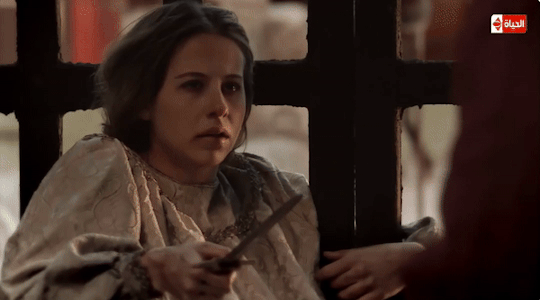

The international fair was in full swing, with the saddle and leather workers engaging in trade close to the castle walls. Concerned that Juana’s departure would cost her authority and reputation, Isabel sent a series of high-ranking emissaries, including Cisneros, in vain attempts to persuade her to return inside.

In the end, Isabel had to come in person:
“With more effort and haste, and making longer days of it than I knew was good for my health.”
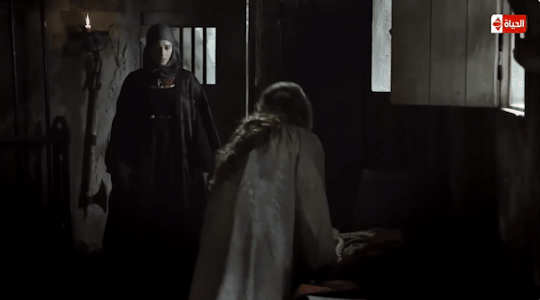
But Juana :
“Spoke to me so heatedly and with words so disrespectful and so far, beyond what a daughter should say to a mother, that had I not seen the state she was in I would not have tolerated it for a moment.”

We do not have Juana’s account. Did she, when arguing with her mother, venture into the darker territory of Isabel’s past? Might she even have referred to Isabel’s role in the descasamiento of Afonso V of Portugal and Juana (‘la Beltraneja’) of Castile when the war of the Castilian succession of 1475–1479 ended in their defeat? The heir to the throne of Castile, Enrique IV's daughter and heir, was still confined to monastic confinement in Portugal in 1503, but she would never give up her claim to the crown.
On 2 December 1503, Lope de Conchillos wrote to his uncle, Fernando's secretary, Miguel Pérez de Almazán, that Isabel was well but “very afflicted and tired” of the princess.
In March 1504, Juana was finally allowed to leave the country. In the end, her tantrums worked. The bishop of Catania, Diego Ramirez de Guzmán, was sent with her to strengthen the Spanish diplomatic presence in Brussels. Moreover, Diego Ramirez de Villaescusa, bishop of Málaga, did not accompany her.


Juana’s journey, from beginning to end, was a reversal of the first. There were no tears when she left Laredo, but Philip eagerly awaited her at Blankenburg/Blankenberge.
While Isabel wondered if she would stay as unhappy as she was while she was here, she was the talk of the Low Countries. Juana's decision to leave Castile would have big effects on her future and the kingdoms she ruled.
Sources: Fleming, G. B. (2018). Juana I: Legitimacy and Conflict in Sixteenth-Century Castile (1st ed. 2018 edition). Palgrave Macmillan.
Fox, J. (2012). Sister Queens: The Noble, Tragic Lives of Katherine of Aragon and Juana, Queen of Castile. Ballantine Books.
Gómez, M. A., Juan-Navarro, S., & Zatlin, P. (2008). Juana of Castile: History and Myth of the Mad Queen. Associated University Presse.
#joanna of castile#juana i of castile#philip the handsome#juana la loca#isabel#juana the mad#juana of castile#johanna van castilie#irene escolar#spanish monarchy#spanish princess#infanta#spain#philip de schone
8 notes
·
View notes
Text
Time, Calendars & Dates in the World of One Piece

Have you ever wondered when One Piece takes place? Wanted to take a look at a timeline but knew you'd be bombarded with spoilers? Then this is the place for you! I'll be talking about both the anime/manga and the live action, because they differ by a few months.
First things first: The months stay the same! One year consists of twelve months with the same number of days as in our Gregorian Calendar. It's never explicitly confirmed if they're also called January, February etc. but characters' birthdays are listed as (for examle) May 5th by Oda himself. Maybe it's out of convenience, maybe they're actually called the same, who knows. But you can list your characters' birthdays the same as you would if they were born on Earth. Also, the world of One Piece has multiple moons, but the main moon (which is also usually the only one pictured) most likely has either the same or very smilar moon phases to our moon here on Earth.
But now for the a little more complicated part: Which year are we in? Well, we can't tell for sure, but we can make assumptions.
Regarding what calendar the One Piece verse goes by, there are two calendar systems. One is the Age of Heaven and one is the Age of the Sea Circle. The Age of Heaven only has very vague info on it available and we don't have any way of converting canon events into its calendar, so it's no use for our purposes here. However, the Age of the Sea Circle has one confirmed year that we can use to roughly calculate everything else. It comes from an explorer's logbook dated 1120. We know that the events described in this logbook happened roughly 400 years before the Straw Hats travel the seas, so we can declare that the main story of One Piece takes place in the 16th century.
From then on, it's guesswork. A lot of people, myself included, assume that Gold Roger died in the year 1500 so that the beginning of the Great Age of Pirates could be at the start of a new century. It would fit Oda as an author and it would fit Roger as a character, because he would be dramatic like that. He knew what he was doing when he got executed that day, and it's very obvious in the Live Action that he did. It'll become even more obvious later in the story, you'll see! Anyways: Because Gold Roger's execution happened 22 years before Luffy set out to sea at the beginning of the East Blue Saga, Luffy's journey would then start in the year 1522.
But we can get even more exact. At least in the Live Action. In the anime/manga, everything's a little blurry. All we know for sure is that Luffy sets out to sea either on or after his birthday on May 5th. From then on, it's all guesswork based on how many days we see pass in the story and how many may have passed.
In the Live Action, things are a lot easier, because we're explicitly told that it's Kaya's birthday on the day the Straw Hats arrive in Syrup Village. Kaya's birthday is confirmed to be August 24th, so the Straw Hats arrive at Syrup Village on August 24th 1522 in the Live Action.
So, now that we've declared where we are chronologically, here are some important birthdays according to the calculation I just explained:
The Straw Hats
Monkey D. Luffy: May 5th 1505 (17 years old, youngest Straw Hat)
Roronoa Zoro: November 11th 1502 (19 years old, oldest Straw Hat)
Nami: July 3rd 1504 (18 years old)
Usopp: April 1st 1505 (17 years old)
Sanji: March 2nd 1503 (19 years old)
Bonus Tumblr beloveds:
Shanks: March 9th 1485 (37 years old)
Mihawk: March 9th 1481 (41 years old - yes he shares his birthday with Sanks, I was just as surprised; what a wild day for the One Piece world)
Buggy: August 8th 1485 (37 years old)
I hope this little guide is helpful to you! Don't be shy to ask for any dates you'd like to know, I'll calculate them for you or make an estimate if they can't be pinned down.
9 notes
·
View notes
Text
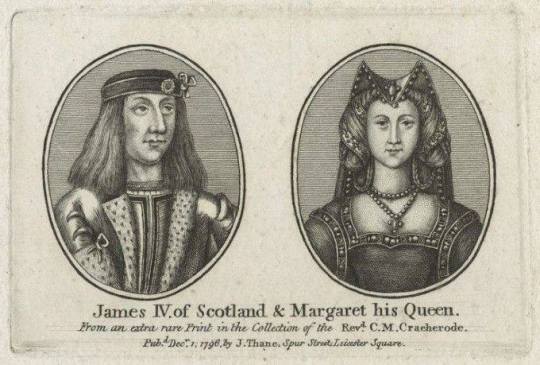
On May 28th 1503 a Papal Bull was signed by Pope Alexander VI confirming the marriage of King James IV and Margaret Tudor and the "Treaty of Everlasting Peace" between Scotland and England.
From an early age, Margaret was part of Henry VII’s negotiations for important marriages for his children and her betrothal to James IV of Scotland was made official by a treaty in 1502 even though discussions had been underway since 1496. Part of the delay was the wait for a papal dispensation because James’ great-grandmother was Joan Beaufort, sister of John Beaufort, who was the great-grandfather of Margaret Tudor. That made James IV and Margaret Tudor fourth cousins, which was within the prohibited degree. Patrick Hepburn, the Earl of Bothwell, acted as a proxy for James IV of Scotland for his betrothal to Margaret Tudor at Richmond in January 1502 before the couple was married in person.
James was dashing, accomplished, highly intelligent and interested in everything, James IV of Scots enjoyed himself with mistresses while manoeuvring to secure a politically useful bride, so the marriage was not just an "English thing".
Our King was 30, his bride was what has been described as "a dumpy 13 year old".
I'll dip into the "newspaper" of the day in Grafton's chronicle the following was written....
"Thus this fair lady was conveyed with a great company of lords, ladies, knights, esquires and gentlemen until she came to Berwick and from there to a village called Lambton Kirk in Scotland where the king with the flower of Scotland was ready to receive her, to whom the earl of Northumberland according to his commission delivered her." he went on "Then this lady was taken to the town of Edinburgh, and there the day after King James IV in the presence of all his nobility married the said princess, and feasted the English lords, and showed them jousts and other pastimes, very honourably, after the fashion of this rude country. When all things were done and finished according to their commission the earl of Surrey with all the English lords and ladies returned to their country, giving more praise to the manhood than to the good manner and nature of Scotland."
Not exactly flattering words!
The wedding finally took place for real (after several proxy marriages) on 8 August, 1503 at Holyrood House in Edinburgh. Margaret was officially crowned Queen in March 1504. The Scottish poet William Dunbar wrote several poems to Margaret around this time, including “The Thistle and the Rose”, “To Princess Margaret on her Arrival at Holyrood”
Now fayre, fayrest of every fayre,
Princes most plesant and preclare,
The lustyest one alyve that byne,
Welcum of Scotlond to be Quene!
Margaret was apparently homesick and not happy in her early days in Scotland, but the couple settled down to married life, there first child, James was born four years later, he died within the year, their second, a daughter fared little better she never survived a day. In 1309 another son only lived to be nine months old, such was the difficulties of trying to produce and heir, it's a wonder the human race survived, what with mortality rates being so high in the nobility, one only wonders how high it would have been for the ordinary citizen of Scotland?
Meanwhile Margarets father passed away and Henry VIII took the throne.
Margaret’s next child was born on April 11, 1512 at Linlithgow and named James. He survived childhood and was to become King James V and father of Mary.
As for "Treaty of Everlasting Peace" it lasted around 10 years, in the first few years of Henry VIII’s reign, the relations with Scotland became strained, and it eventually erupt in 1513, when Henry VIII went to France to wage war, this invoked The Auld Alliance and James IV, Henry VIII's brother-in-law marched his army into England only to be disastrously cut down on September 9th at Flodden Field, with too many of our Scottish Knights to count. The Queen gave birth to another son, Alexander the following April, but things would turn sour for her.
Margaret, then regent, remarried into the powerful Douglas family, the Scottish Parliament then removed her as Regent a pregnant Margaret fled Scotland in 1515, her sons were taken from her before she left. She was given lodgings by her brother at Harbottle Castle, where she gave birth to daughter, Margaret Douglas, who herself played a big part in Scottish history, becoming mother to Henry Stuart, Lord Darnley.
That wasn't the last we had seen of Margaret Tudor though, she returned to Scotland with a promise of safe conduct in 1517 but her marriage to Douglas was a disaster, he had taken a mistress while she was in England.
In 1524 Margaret, in alliance with the Earl of Arran, overthrew Albany's regency and her son was invested with his full royal authority. James V was still only 12, so Margaret was finally able to guide her son's government, but only for a short time since her husband, Archibald Douglas, came back on the scene and took control of the King and the government from 1525 to 1528. This would all come back to bite the ambitious Douglas family in the bum
In March 1527, Margaret was finally able to attain an annulment of her marriage to Angus from Pope Clement VII and by the next April she had married Henry Stewart, who had previously been her treasurer. Margaret's second husband then arrested her third husband on the grounds that he had married the Queen without approval. The situation was improved when James V was able to proclaim his majority as king (he was 16 at the time) and remove Angus and his family from power. James created his new stepfather Lord Methven and the Scottish parliament proclaimed Angus and his followers traitors. However, Angus had escaped to England and remained there until after James V's death.
Margaret's relationship with her son was relatively good, although she pushed for closer relations with England, where James preferred an alliance with France. In this, James won out and was married to Princess Madeleine, daughter of the King of France, in January 1537. The marriage did not last long because Madeleine died in July and was buried at Holyrood Abbey. After his first wife's death, James sought another bride from France, this time taking Marie de Guise (eldest child of the Claude, Duc de Guise) as a bride. By this same time, Margaret's own marriage had followed a path similar to her second one when Methven took a mistress and lived off his wife's money.
On October 18th 1541, Margaret Tudor died in Methven Castl. probably from a stroke. Margaret was buried at the Carthusian Abbey of St. John’s in Perth. Although Margaret's heirs were left out of the succession by Henry VIII and Edward VI, ultimately it would be Margaret's great-grandson James VI who would become king after the death of Elizabeth.
#scotland#scottish#england#english#the stewarts#the tudors#the thistle and the rose#history#marriage#peace tr
22 notes
·
View notes
Text
The names and birthdates of the SwanFire and Charming family. Medieval/Tudor edition.
David I, House of Nolan, king of Mist Haven, king-consort of Germania - b. December 18, 1462
Snow White I, Queen of Germania, queen-consort of Mist Haven - b. April 22, 1465
Emma Ruth Eva of Mist Haven, House of Nolan - b. October 23, 1483 (once she becomes queen, she’s the first of her name)
Eva (I’m sorry! I don’t have a full name picked out for her that makes sense😭), princess of Mist Haven - b. December 11, 1490
Edward Robert Leopold, prince of Mist Haven - b. May 31, 1492
Baelfire (I really don’t know what his title would be other than consort later on. I imagine him being a soldier in my fics who works his way up the ranks so that has me stumped too) - b. March 23, 1483
Emma and Baelfire’s wedding date: February 10, 1501 (EHEM… do the math on Ella’s birthday😏)
Henry David Leopold Robert of Mist Haven, House of Nolan - b. August 15, 1501 (When he becomes king someday, he’s probably… the fourth of his name…?🤔)
Ivy Rose, princess of Mist Haven - b. November 28, 1503
Ella Snow, princess of Mist Haven - b. November 18, 1504
Ruth Hilaria, princess of Mist Haven - b. July 10, 1511 (there’s a story behind the name Hilaria if anyone wants to know it)
Emma’s miscarried babies: Arthur, b. November 10, 1507 - Electra, b. May 29, 1508😔
8 notes
·
View notes
Text




Flashback: Hertogenbosch, Holland (Brabant) 1503-1504
Nicholas comes to the conclusion that Ilsa died and says, Of course. Why would you trust me? I'm a man. Nicholas bends over a deceased Ilsa and gives her a gentle kiss on the cheek. Nicholas looks over as Master Painter Bosch comes into the room.
#Forever Knight#112 Dead Issue#Flashback#Hertogenbosch#Holland#1503/1504#Brabant#Master Painter Bosch#Ilsa#Nicholas De Brabant#Geraint Wyn Davies#Vampires#Blood#Hieronymous Bosch#Female subject#The Garden of Earthly Delights#Poison#Silver Goblet#Nick Knight#Nicholas Knight#Memories#Attack#Violation#Guilt#Sadness#Tears#Possible seduction
3 notes
·
View notes
Text
#this is just meant to be fun …#pls do not a) be weird or b) lecture on how it could ONLY be either 01 or 07#i have read them. idc#I actually think she couldn’t have been later than 1505#based on smth Thomas Boleyn said but. that’s me .#Might do a Boleyn sibling birth order poll next … hmmm#George being the baby of the family seems to be a more common opinion nowadays?#but based on personality idt it could have been anyone but Anne
14 notes
·
View notes
Text

From Season 1, Episode 112 Dead Issue - Flashback of Nicholas in Hertogenbosch, Holland 1503-1504. #ForeverKnight #GeraintWynDavies
Just having fun with these screenshots. Sony has all the rights to this screenshot set. 😉
#Forever Knight#112 Dead Issue#Flashback#Hertogenbosch#Holland#1503-1504#Sexy Vampire#Nicholas De Brabant#Hieronymous Bosch#The Garden of Earthly Delights#Geraint Wyn Davies#Blood#Vampires#Memories#Nick Knight#Nicholas Knight#Enhanced Photo#Photo Stills#90s vampire cop show
2 notes
·
View notes
Text

Andrea Solario - Ecco Homo. 1503 - 1504
100 notes
·
View notes
Note
Hi, im super confused about something and I wondered if you could clarify - did Henry VII actually consider marrying Catherine of Aragon himself after Arthur's death, or is that just a rumor that's been blown up out of proportion?
Hi! No, we don't have any evidence that Henry VII actually considered it himself. The only thing we have is Isabella's reaction to the rumour in April 1503:
The Doctor has also written to us concerning the marriage of the King of England with the Princess of Wales, our daughter, saying that it is spoken of in England. But as this would be a very evil thing,—one never before seen, and the mere mention of which offends the ears,—we would not for anything in the world that it should take place. Therefore, if anything be said to you about it, speak of it as a thing not to be endured. You must likewise say very decidedly that on no account would we allow it, or even hear it mentioned, in order that by these means the King of England may lose all hope of bringing it to pass, if he have any. For, the conclusion of the betrothal of the Princess, our daughter, with the Prince of Wales, his son, would be rendered impossible if he were to nourish any such idea. If you should find that the King of England wishes to marry, we will tell you, at the end of this letter, the match which we think would be suitable for him.
Nothing was actually said to the Spanish ambassador—it was a rumour 'spoken of in England', but we don't know by whom: the courtiers, the common people, the king's council, the merchants? We don't know who, but definitely it wasn't Henry VII himself who said it, because Isabella is neither sure 'if he [has] any' intentions towards that marriage, nor if he 'wishes to marry' at all. She preemptively suggests Joanna of Naples, Ferdinand's niece, as a bride.
By this marriage the alliance and friendship subsisting between the two parties would, at any rate, be strengthened. On this account, if you find that the King of England wishes to marry, act in the way and manner which may seem best to you, being careful of the honour of both parties.
Again, she didn't even know if he wished to remarry. In January 1504, almost a year after Elizabeth of York's death, Isabella and Ferdinand once again proposed a match with Ferdinand's niece:
Finally, you are acquainted with what we wrote to you, of late, respecting what you were to say to the King of England about the Queen of Naples, the young lady our niece, but you have not made any reply. In any case speak to him in the best way you can, and endeavour to get to know, completely, the wishes of the King of England.
Half a year later, in June 1504, they still insisted on the idea this time enticing him by way of money:
As to the affair of the match between the Queen of Naples, our niece, and the King of England, we have already written to you what we think should be done. Moreover, although the King of England be a widower, and [has] children, 2,000 dobloons will be given her as a marriage portion. Inform the King of England of this in the way that seems best to you, and learn clearly and decidedly his wishes in regard to it.
It would be at the end of October 1504 that Henry would reply favourably to the idea, asking for a portrait to be sent to him.
The King, moreover, begged me to write to your Highnesses, telling you he had not yet decided to take to himself a wife. Yet, for the sake of your Highnesses, he was inclined to do it.
The ambassador thinks that Henry really wanted the marriage and was simply playing coy, which, then as now, is up to speculation:
Your Highnesses may verily believe that he really wishes the marriage; only it is the habit of this monarch to conduct all his affairs with much gravity and deliberation.
The ambassador urgently asked for a portrait to be made and sent to England (a portrait that would be eventually denied, for whatever reason), and says that Henry really wanted the marriage, 'judging by what I have observed in him, and the pleasure with which he spoke of it' but still shows apprehension at Henry mentioning Margaret of Austria who had also recently become a widow. Henry VII 'spoke much of the Duchess [Margaret of Austria] and her widowhood. But that will in no wise hinder the marriage [with Joanna of Naples], God willing.'
I think there's more than a bit of optimism in the ambasador's exhortation, not only because Margaret of Austria was clearly better ($$$) than Joanna of Naples as a bride, but because later in his letter the ambassador freely admits that he could not trust Henry's words on another issue: 'You may likewise remember that although he gave me many assurances, I did not, and would not, believe him at all, and that I had looked upon it merely as talk.'
Tl;dr: We have no evidence that Henry VII ever considered marrying Catherine of Aragon, or that he ever considered remarrying soon after Elizabeth of York's death at all. On the contrary, from April 1503 to October 1504 he dodged Ferdinand and Isabella's marriage suggestions, going so far as to tell Ferdinand that 'he had not yet decided to take to himself a wife' in late 1504. That would be a rather stupid thing to say if, a year and a half earlier, he had asked the hand of Ferdinand's daughter in marriage. It is certainly interesting how he didn't reply to their suggestion until Margaret of Austria re-entered the marriage market—was he playing with Ferdinand, raising the stakes for a better dowry or alliance treaty? Much to think about!
It is kind of frustrating how every biography of Catherine of Aragon takes that rumour as real evidence that Henry VII wanted to marry his daughter-in-law and was only dissuaded by Isabella of Castile, for sure.
29 notes
·
View notes